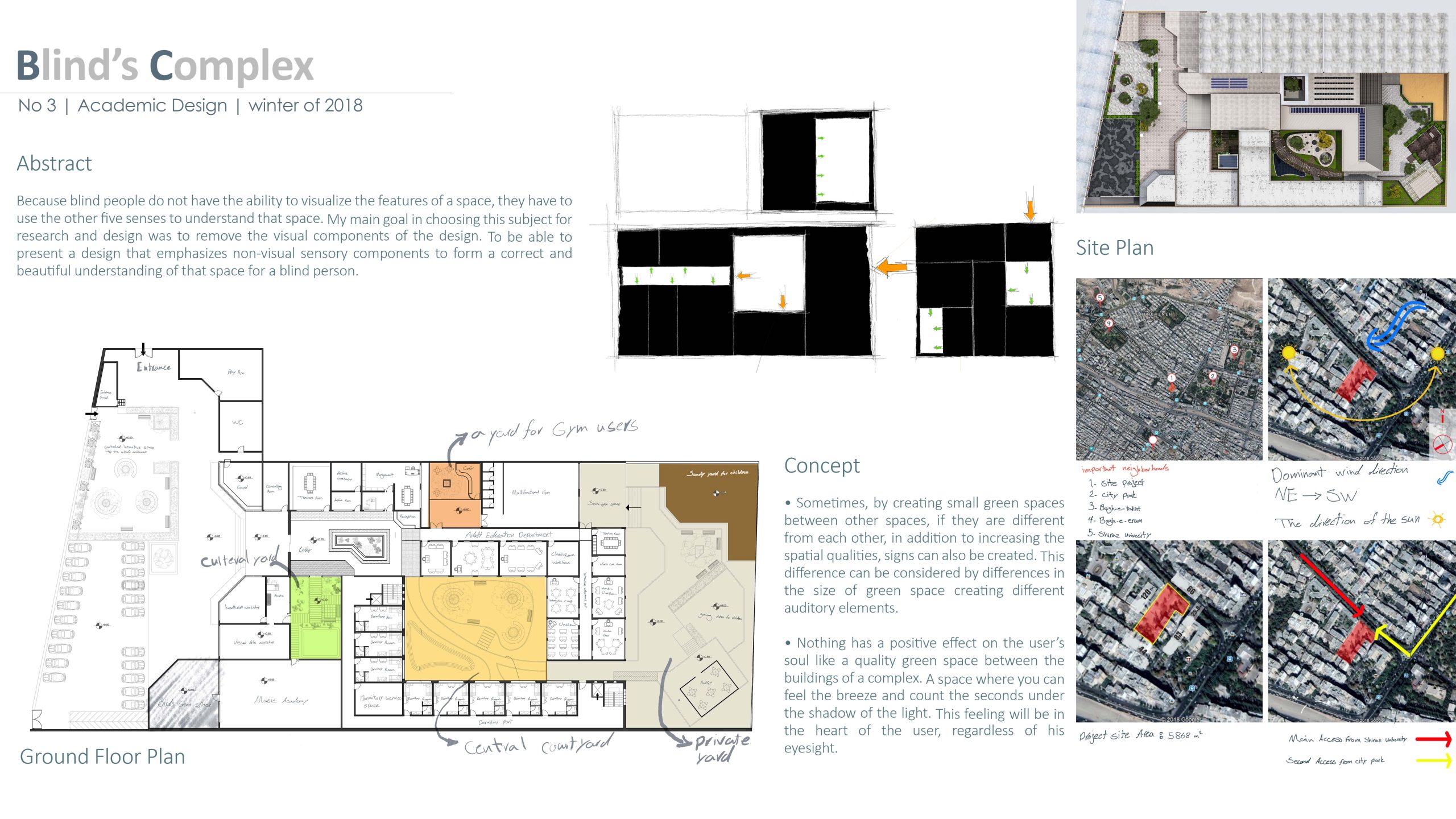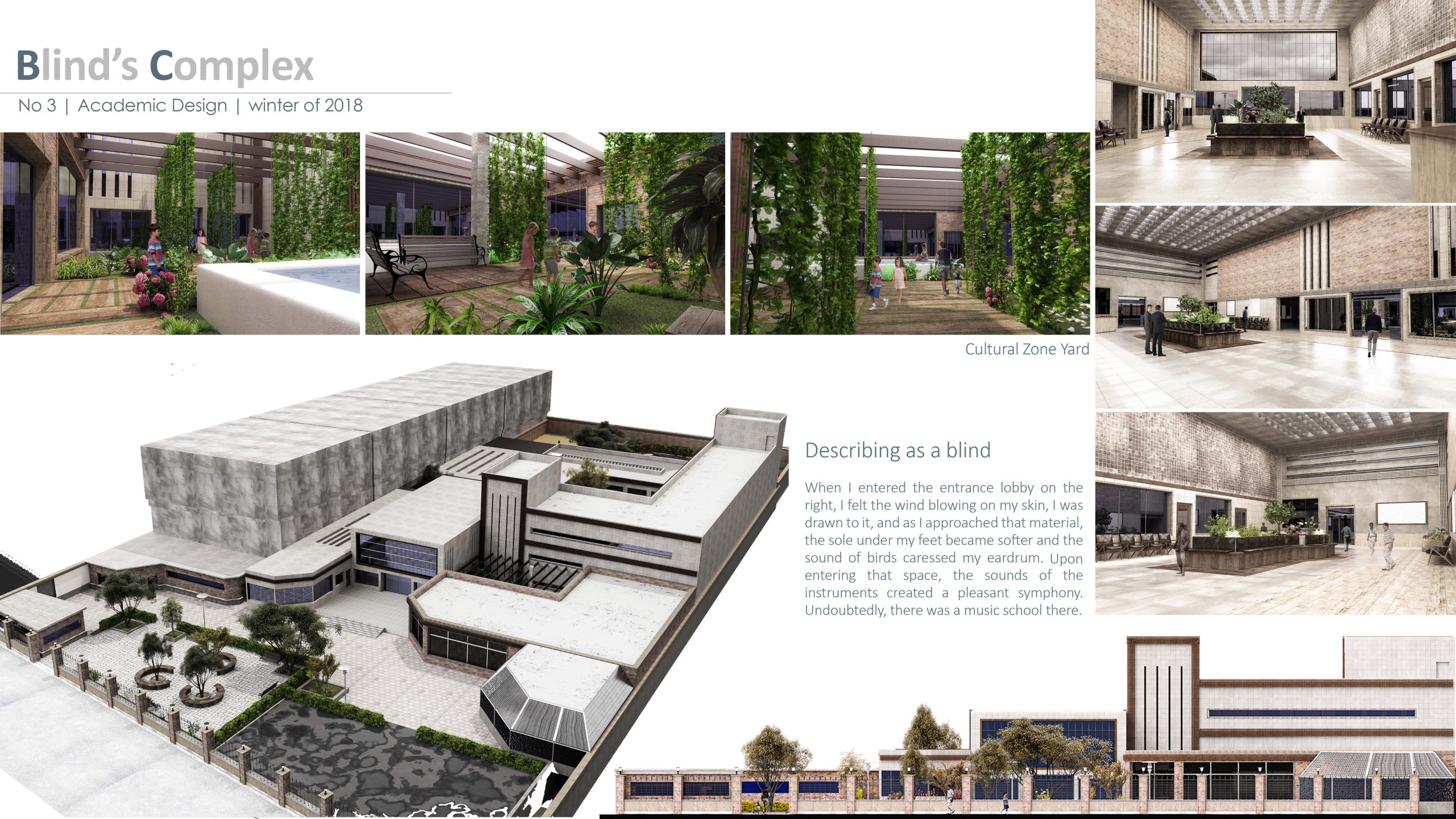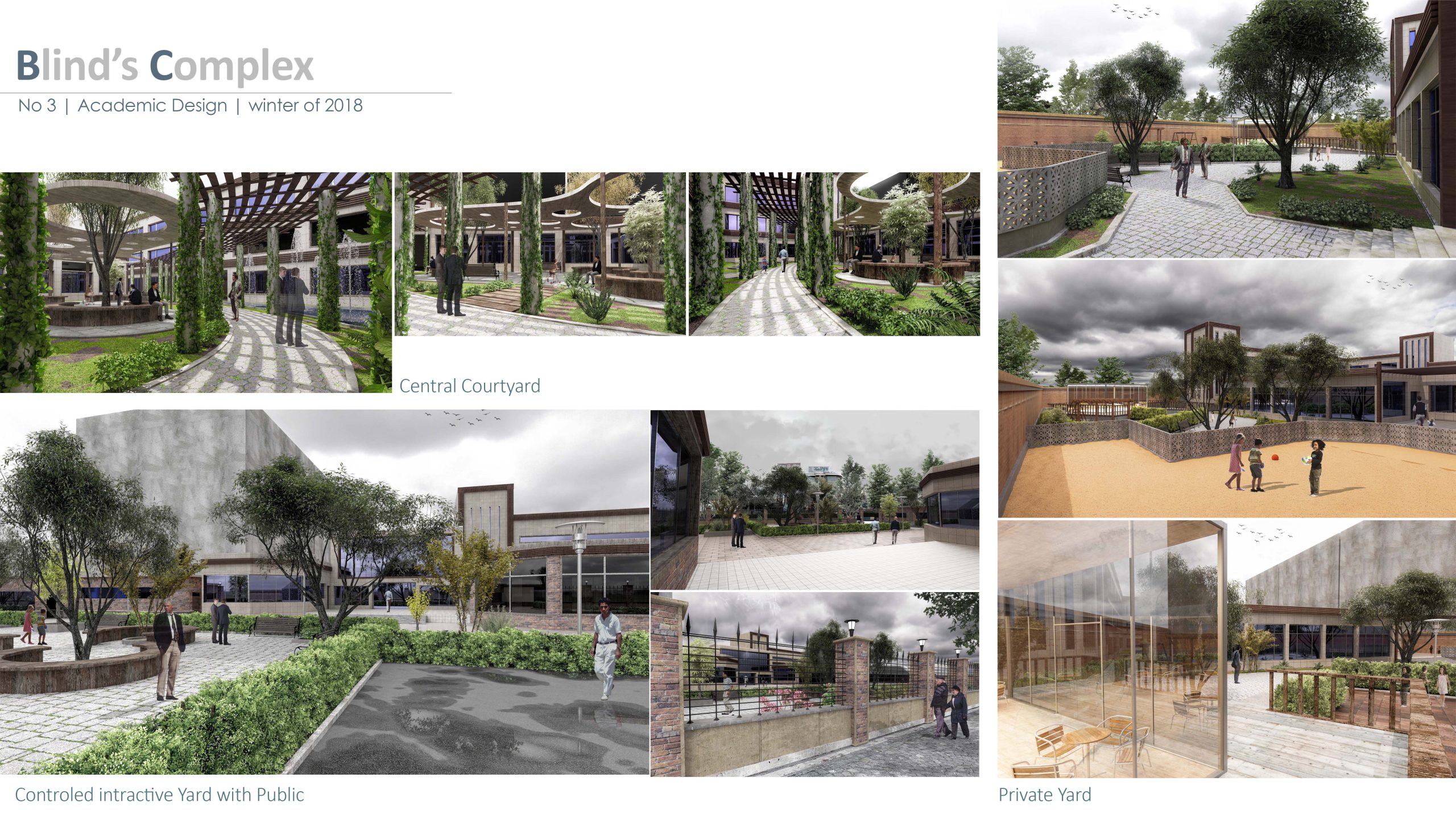Blind’s Complex
Abstract
Because blind people do not have the ability to visualize the features of a space, they have to use the other five senses to understand that space. My main goal in choosing this subject for research and design was to remove the visual components of the design. To be able to present a design that emphasizes non-visual sensory components to form a correct and beautiful understanding of that space for a blind person.
Concept
- Sometimes, by creating small green spaces between other spaces, if they are different from each other, in addition to increasing the spatial qualities, signs can also be created. This difference can be considered by differences in the size of green space creating different auditory elements.
- Nothing has a positive effect on the user’s soul like a quality green space between the buildings of a complex. A space where you can feel the breeze and count the seconds under the shadow of the light. This feeling will be in the heart of the user, regardless of his eyesight.
Describing as a blind
When I entered the entrance lobby on the right, I felt the wind blowing on my skin, I was drawn to it, and as I approached that material, the sole under my feet became softer and the sound of birds caressed my eardrum. Upon entering that space, the sounds of the instruments created a pleasant symphony. Undoubtedly, there was a music school there.


